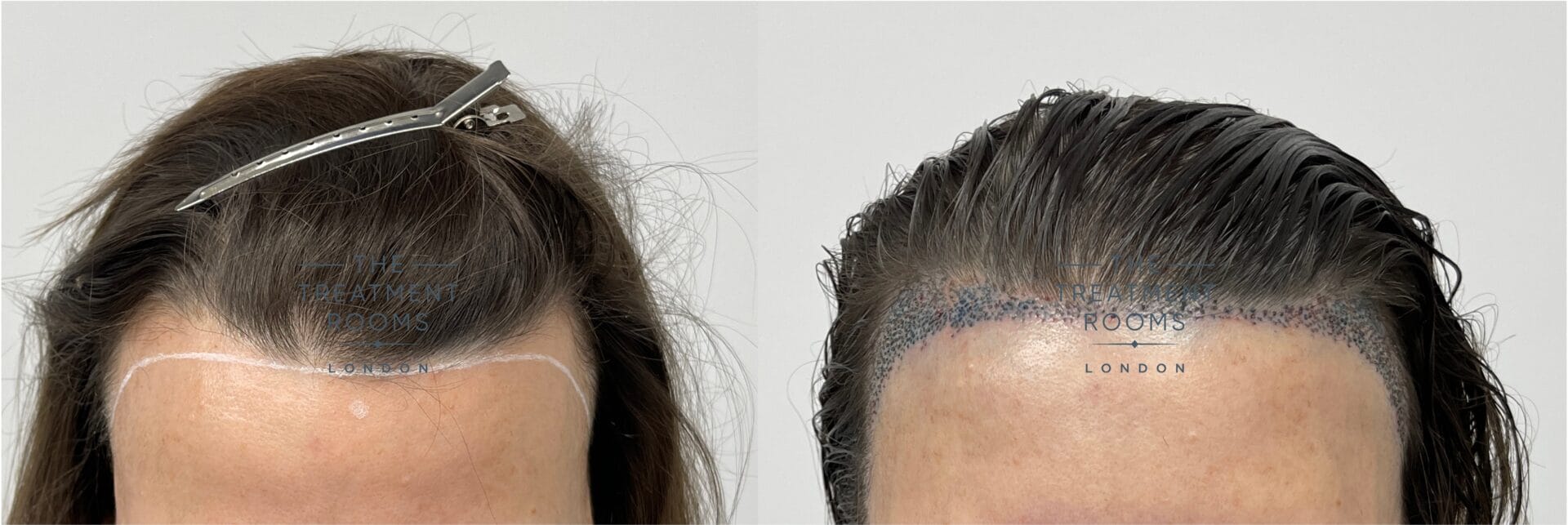HAIR TRANSPLANTATION IN WOMAN

Hair Transplant for Women
(SEO Keywords: hair transplant for women, female hair loss, FUE transplant, safe hair restoration, natural hairline, women’s hair clinic)
Introduction / What it is
Hair loss is not only a concern for men. Many women also struggle with thinning hair, receding hairlines, or bald spots caused by hormonal changes, genetics, stress, or medical conditions. A hair transplant for women is a modern medical solution that restores natural hair growth and helps regain self-confidence. Unlike temporary fixes such as wigs or topical treatments, a hair transplant provides a permanent and natural-looking result.
How it works
The most widely used method for women is FUE (Follicular Unit Extraction). In this procedure, healthy hair follicles are taken individually from a donor area (usually the back of the scalp where hair is denser) and implanted into the thinning or balding areas. Each follicle is carefully placed to match the natural direction of hair growth.
Steps of the procedure:
- Consultation with a dermatologist or hair restoration specialist.
- Identifying the donor and recipient areas.
- Extracting hair follicles with advanced micro-tools.
- Implanting follicles into thinning regions.
- Post-procedure care to ensure healthy regrowth.
This method leaves no visible linear scars and allows faster recovery compared to older techniques.
Benefits and results
- Natural appearance: Restores hair in a way that blends with existing strands.
- Permanent solution: Once follicles are implanted, they continue to grow naturally for life.
- Boosts confidence: Many women report feeling younger and more self-assured after treatment.
- Customizable treatment: The procedure is tailored to each woman’s unique hairline and density needs.
Most women begin to see new hair growth within 3–4 months, with full results visible after 9–12 months.
Safety and risks
Hair transplant for women is a safe procedure when performed by an experienced dermatologist. However, like any medical treatment, it comes with minor side effects such as:
- Redness or mild swelling in the treated area.
- Temporary hair shedding known as “shock loss.”
- Minor discomfort during recovery.
Serious complications are rare, especially when patients follow medical instructions carefully.
Before and after care
Before the procedure:
- Avoid smoking, alcohol, and blood-thinning medications.
- Wash your scalp with a mild shampoo.
- Follow all instructions from your doctor.
After the procedure:
- Keep the scalp clean and avoid scratching.
- Sleep with your head elevated to reduce swelling.
- Use prescribed medication and follow care guidelines.
- Avoid direct sun exposure and heavy exercise for at least 2 weeks.
Who it’s suitable for
Hair transplant is suitable for women who experience:
- Genetic hair loss (female-pattern baldness).
- Receding hairlines or thinning at the crown.
- Hair loss caused by hormonal changes such as after pregnancy or menopause.
- Hair loss due to burns, scars, or previous medical conditions.
Pricing and consultation
The cost depends on the number of grafts required and the technique used. At a professional clinic, patients receive a personalized consultation where the dermatologist explains the treatment plan, expected results, and total cost. While pricing varies, it is important to choose safety and expertise over cheaper, risky options.
Summary
Hair transplant for women is a safe, effective, and permanent solution to hair loss. With techniques like FUE, women can achieve a natural hairline, fuller scalp coverage, and restored self-confidence. If you are struggling with thinning hair or bald patches, consult a dermatologist to explore whether this life-changing treatment is right for you.
